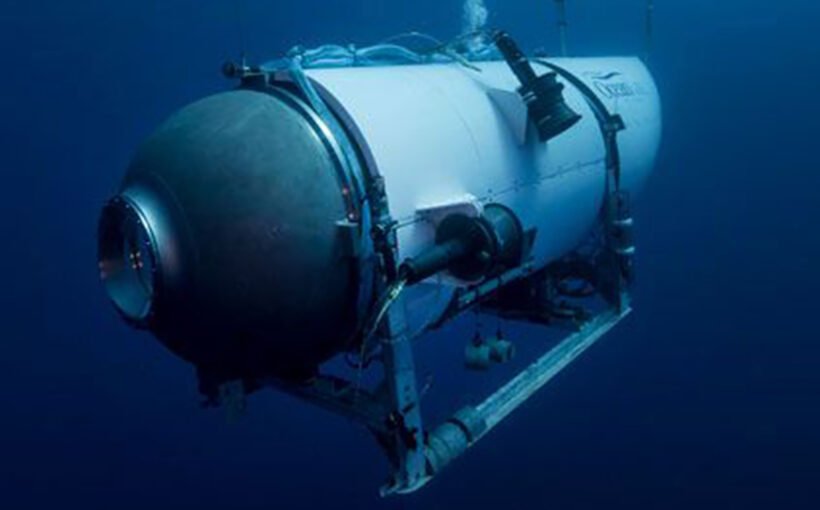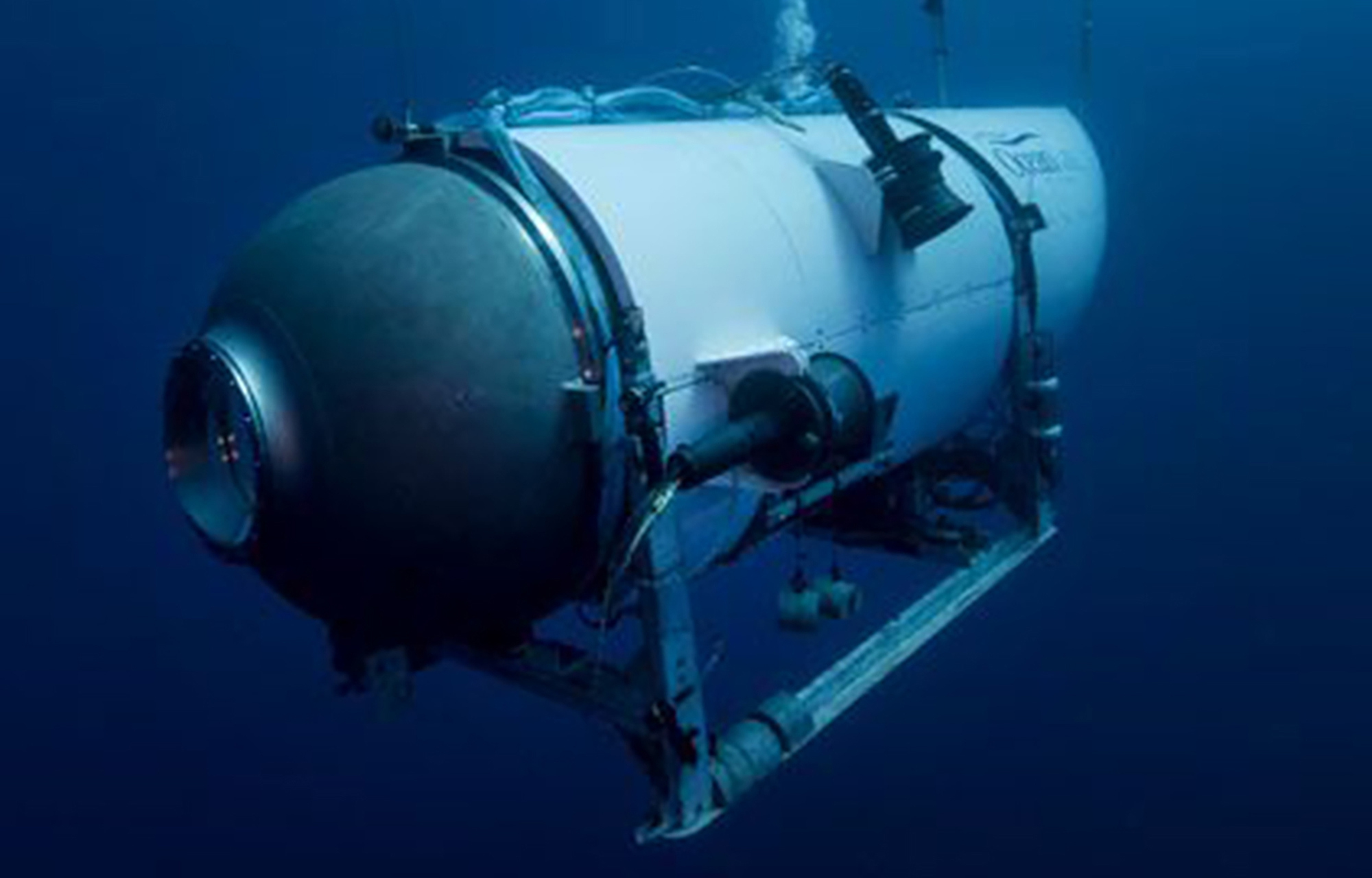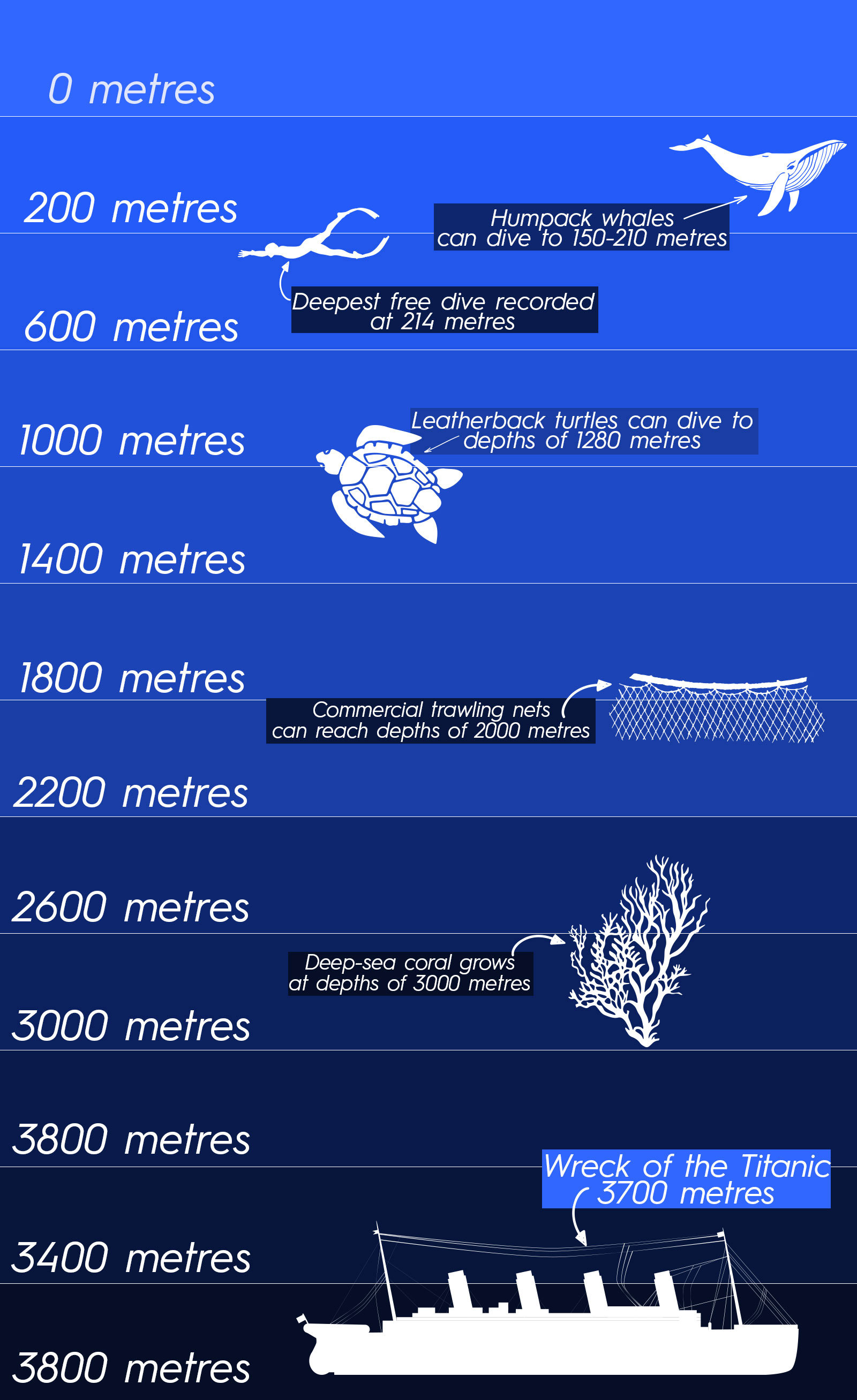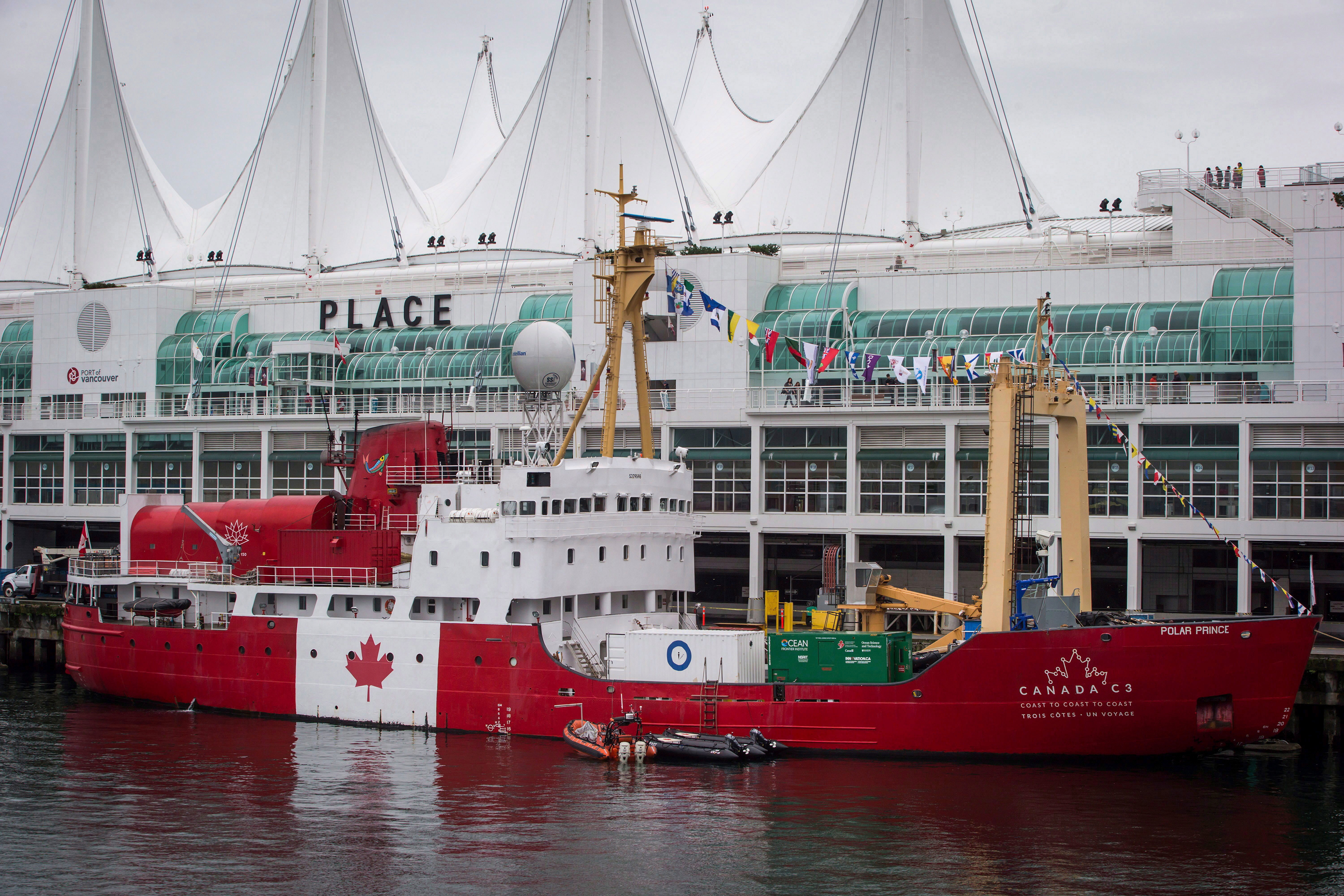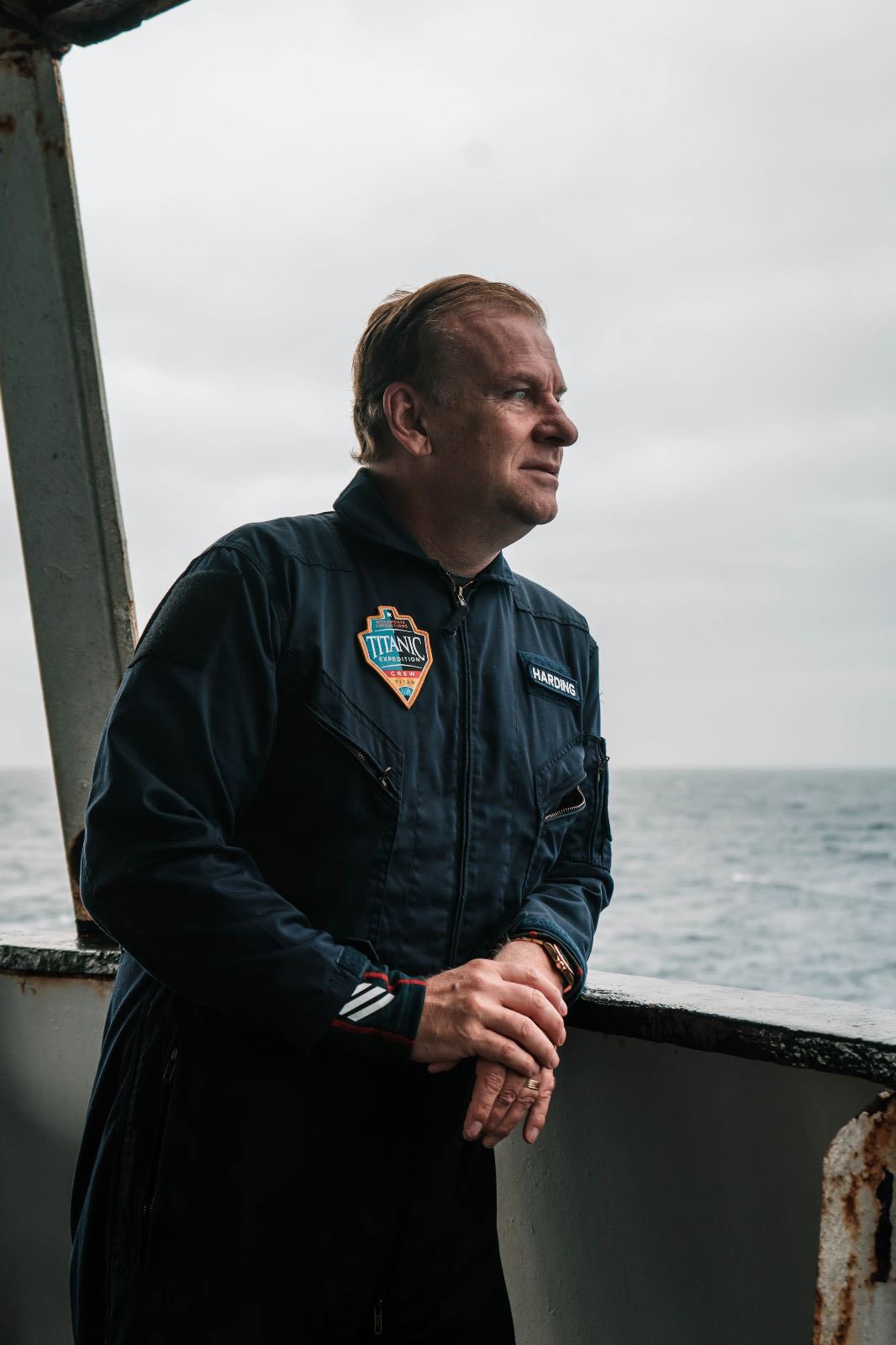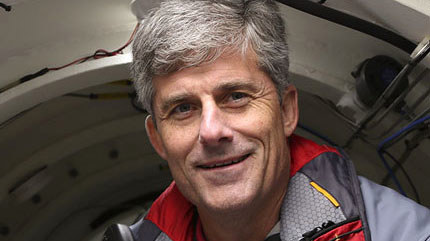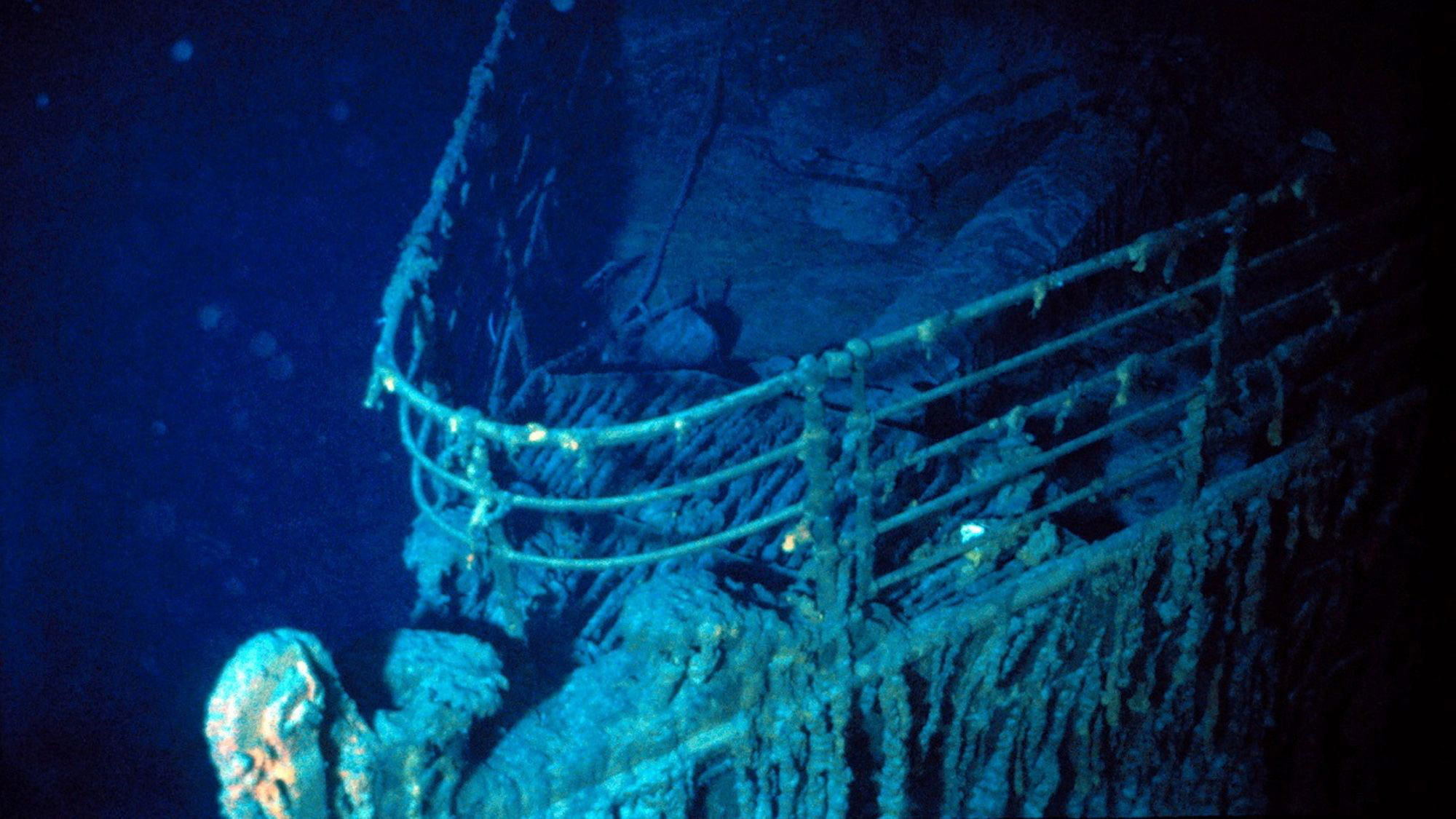Crews searching for the missing Titan submersible have heard banging sounds, according to the US Coast Guard, who confirmed that Canadian P-3 aircraft detected underwater noises in the search area.
Remotely Operated Vehicles (ROVs) were relocated in an attempt to explore the origin of the noises, the coast guard said, but those searches "yielded negative results".
The ROVs will continue to search areas where bangs were heard every 30 minutes on Tuesday (local time), and then again four hours later.
READ MORE: What could have gone wrong with missing submersible?
The coast guard said data from the P-3 aircraft has been shared with US Navy experts for further analysis which will be considered in future search plans.
News of a potential major development began to circulate this afternoon after an internal government memo detailed sonar devices had been deployed because of the reports of "banging".
A later report also suggested more sounds had been heard after the first round of noises, though those reports were not described as "banging."
A Canadian P3 aircraft also located a white rectangular object in the water, according to a memo update, but another ship set to investigate was diverted to help research the acoustic feedback instead.
OceanGate said they had no information to share on this when reached for comment, according to reports.
In a letter posted on social media, a private US exploration group called the Explorers Club said "signs of life" should breathe fresh optimism into the frantic search effort, appearing to reference reports of banging.
"We have much greater confidence that there is cause for hope, based on data from the field — we understand that likely signs of life have been detected at the site," the letter written by club president Richard Garriot said.
READ MORE: Story behind world's deepest deep sea rescue as concerns over missing Titanic sub mount
https://twitter.com/ExplorersClub/status/1671339484355469312?ref_src=twsrc%5Etfw
Two of those on the missing submersible – billionaire businessman Hamish Harding and French underwater adventurer Paul-Henri Nargeolet – are members of the club.
Rescuers in a remote area of the Atlantic Ocean are racing to find the missing submersible, which was carrying five people on a mission to the wreckage of the Titanic.
The carbon-fibre submersible, named the Titan, part of a mission by OceanGate Expeditions, carried a pilot, a renowned British adventurer, two members of an iconic Pakistani business family and a Titanic expert.
Authorities reported the vessel overdue on Sunday night about 700km south of St John's, in the Canadian province of Newfoundland.
Every passing minute puts the Titan's crew at greater risk.
There is only around 24 hours of oxygen left in the vessel.
Search efforts have "not yielded any results", Captain Jamie Frederick of the First Coast Guard District Response Department said during a press conference today.
READ MORE: Why the odds are so heavily stacked against successful sub rescue
Journalist David Pogue, who travelled to the Titanic aboard the Titan last year, said the vehicle uses two communication systems: text messages that go back and forth to a surface ship and safety pings that are emitted every 15 minutes to indicate that the sub is still working.
Both of those systems stopped about an hour and 45 minutes after the Titan submerged.
"There are only two things that could mean. Either they lost all power or the ship developed a hull breach and it imploded instantly. Both of those are devastatingly hopeless," Pogue told CBC on Tuesday.
Experts said the rescuers face steep challenges.
READ MORE: Father and son duo among five people in missing Titanic submersible
Alistair Greig, a professor of marine engineering at University College London, said submersibles typically have a drop weight, which is "a mass they can release in the case of an emergency to bring them up to the surface using buoyancy".
"If there was a power failure and/or communication failure, this might have happened, and the submersible would then be bobbing about on the surface waiting to be found," Greig said.
Another scenario is a leak in the pressure hull, in which case the prognosis is not good, he said.
"If it has gone down to the seabed and can't get back up under its own power, options are very limited," Greig said.
"While the submersible might still be intact, if it is beyond the continental shelf, there are very few vessels that can get that deep, and certainly not divers."
Even if they could go that deep, he doubts rescuers could attach to the submersible.
By Tuesday morning, an area totalling about 26,000 square kilometres had been searched.
The Canadian research icebreaker Polar Prince, which was supporting the Titan, reportedly lost contact with the vessel about an hour and 45 minutes after it submerged.
The Polar Prince was to continue to do surface searches throughout the night and a Canadian Boeing P-8 Poseidon reconnaissance aircraft will resume their surface and subsurface search in the morning, the US Coast Guard said on Twitter.
Two US Lockheed C-130 Hercules aircraft also have conducted overflights.
The Canadian military also dropped sonar buoys to listen for any possible sounds from the Titan.
Ship-tracking satellite data from MarineTraffic.com showed the Polar Prince some 690 kilometres south-east of St John's on Tuesday morning.
The Bahamas-flagged cable layer Deep Energy was nearby as well, likely assisting in the surface search.
In an earlier email to the AP, Concannon said officials were working to get a remotely operated vehicle that can reach a depth of 6 kilometres to the site as soon as possible.
OceanGate's expeditions to the Titanic wreck site include archaeologists and marine biologists.
The company also brings people who pay to come along, known as "mission specialists."
They take turns operating sonar equipment and performing other tasks in the five-person submersible.
OceanGate said its focus was on those aboard and their families.
"We are deeply thankful for the extensive assistance we have received from several government agencies and deep sea companies in our efforts to reestablish contact with the submersible," it said in a statement.
OceanGate CEO Stockton Rush, who was also on the missing submersible, told The Associated Press in June 2021 that each dive would typically include a pilot, a researcher and three mission specialists.
He said the mission specialists would operate sonar equipment and cameras as well as handle communications and possibly drive the Titan.
"We have a text messaging system — actually two of them," he said.
"So, someone will be on communication, typing messages back and forth.
"And then everybody, conditions permitting, will get to drive the sub.
"So, assuming that the visibility is pretty good and the currents aren't bad, and we're not next to the wreck, they'll have a chance to drive the sub."
Rush called the Titan's technology "very cutting edge" and said it was developed with the help of NASA and Boeing and a number of aerospace manufacturers.
"This is the only submersible — crude submersible — that's made of carbon fibre and titanium; the largest carbon fibre structure that we know of. It's 5-inch-thick carbon fibre, three-and-a-quarter inch thick titanium," Rush said.
Authorities have yet to formally identify those on board, though some names have been confirmed.
British businessman Harding, who lives in Dubai in the United Arab Emirates, was one of the mission specialists, according to Action Aviation, a company for which Harding serves as chairman.
Harding is a billionaire adventurer who holds three Guinness World Records, including the longest duration at full ocean depth by a crewed vessel.
In March 2021, he and ocean explorer Victor Vescovo dived to the lowest depth of the Mariana Trench. In June 2022, he went into space on Blue Origin's New Shepard rocket.
Also on board were Pakistani nationals Shahzada Dawood and his son Suleman, according to a family statement sent to the AP.
The Dawoods belong to one of Pakistan's most prominent families.
Their eponymous firm invests across the country in agriculture, industries and the health sector.
French explorer and Titanic expert Nargeolet also was on board, according to David Gallo, a senior adviser for strategic initiatives and special projects at RMS Titanic.
Gallo identified Nargeolet, a friend who has led multiple expeditions to the Titanic, on Tuesday during an interview with CNN.
According to the company's website, Rush became the youngest jet transport-rated pilot in the world in 1981, aged 19.
The expedition was OceanGate's third annual voyage to chronicle the deterioration of Titanic, which struck an iceberg and sank in 1912, killing all but about 700 of the roughly 2200 passengers and crew.
Since the wreckage's discovery in 1985, it has been slowly succumbing to metal-eating bacteria.
Some have predicted the ship could vanish in a matter of decades as holes yawn in the hull and sections disintegrate.
OceanGate's website had described the "mission support fee" for the 2023 expedition as $US250,000 ($360,000) a person.
In a May 2021 court filing, OceanGate said the Titan had an "unparalleled safety feature" that assesses the integrity of the hull throughout every dive.
The submersible is capable of diving four kilometres "with a comfortable safety margin," OceanGate said in the court filing.
It weighs about 9000 kilograms in the air, but is ballasted to be neutrally buoyant once it reaches the seafloor, the company said.
During its expedition in 2022, OceanGate reported that the submersible had a battery issue on its first dive, and had to be manually attached to its lifting platform, according to a November court filing.
More missions, however, followed.
OceanGate has described the submersible as a "state-of-the-art vessel" that "is lighter, more spacious and more comfortable than any other deep-diving submersible exploring the ocean today".
But the custom-built, titanium-domed Titan represented a risk.
Recalling his own trip aboard the Titan, Pogue said the vessel got turned around looking for the Titanic.
"There's no GPS underwater, so the surface ship is supposed to guide the sub to the shipwreck by sending text messages," Pogue said.
"But on this dive, communications somehow broke down.
"The sub never found the wreck."
Timeline: How the expedition unfolded
Friday, June 16
- The Polar Prince departs St John's, Newfoundland, with the submersible Titan on board
Sunday, June 18
- The Polar Prince reaches the submersible launch site
- One hour and 45 minutes later communications with Titan are lost
- The vessel is reported overdue at 9.13pm local time (12.13pm Monday AEST)
- A rescue mission is launched involving the US Coast Guard and Canadian Coast Guard
Monday, June 19
- Rear Admiral John Mauger of the US Coast Guard says the submersible has between 70 and 96 hours of oxygen left
- It's confirmed the submersible had the full complement of five people on board
Sign up here to receive our daily newsletters and breaking news alerts, sent straight to your inbox.
